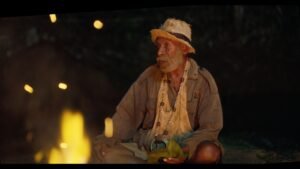
The kingdom of Thailand Most Beautifully Continues the traditions of buddhism. The lives of the people are infused by the desire for spiritual search. Till today, in the midst of the modern world, the spirit of compassion of the buddha’s messages continues in this land. Simultaneously, the Culture of the Ramayana Permetes the lives of the people of Thailand and their king is rama the tenth.

On April 3 and 4, Prime Minister Narendra Modi is Visiting Thailand. This would Put a focus on the history and cooperation between the two countries. Thailand has been one of the great countrys which has shared and nurtured the most significant philosophical and ethical ancient traditions from India. Modi’s visit marks the revival of history and timeless ties Between India and Thailand.
From the 13th to the mid-14th centuries CE, One of the Great Buddhist Center of the World was at Sukhothai, in Thailand. Some of the most graceful Buddhist art was created here, in a style which is famous Till today. Monasteries of that Period Were Perhaps Made of Wood and Have Not Survived. What has Continued and Comes down to us is the art of the buddha image, with all its elegancy and beauty. In Fact, Since That Time, Thailand has a magnificent traction of Theravada Buddhist Images. The lines of the sukhothai buddha figures have a vivid life of their own. The surfaces are smooth and gently curved. The peaceful expressions are sublime.

King u thong of Thailand founded a new capital in the mid-14th century Ce, at a location which is 85 kilometres north of present-day bangkok. It was named ayutthaya, after the city of ayodhya, the birth place of rama, in India. In Fact, The King of Thailand Personifies Ideal Virtuus, As Portrayed in the Character of Rama. The king’s good and moral actions are believed to create peace and prosperity in the country. Till today, Brahmin priests are required at the coronation of the thai king, to instil the qualities of vishnu in him.
Many impressive structures survive at ayutthaya, which show the glorious budget history of this site. Great Buddhist monasteries here were centers of philosophy, literature and the fin arts. In the architecture and buddha statues at ayutthaya, we see a continuation of earlier styles of the sukhothai period. There are modifications as new forms were adopted, through the 417 years of the period of ayutthaya.

Wat maha that was set up as the holy center of the capital city by king borom rajathiraj i. This grand complex was also the home of the supreme budget patriarch at the time. The beautiful wat (or temple) rajburana at ayutthaya was made in the 15th century ce. The magnificent temples of ayutthaya show that preoccupation of the kings was with that which was beyond the material world. The temple has numerous depictions of garuda, on who Lord Vishnu Rides. Garuda has been a Royal Symbol in Thailand Since Early Times. It might be mentioned here Garudas also feature prominently in many Buddhist monasteries of the 11th to 13th centuries ce, across western tibet, ladakh, lahaul-spiti and kinnaur.
In the 15th century Ce, Imposing Chedis, or Stupas, Were Created on a Former Palace Site. This was named Wat Phra Si Sanpet. Another Great Sanctuary of Peace is the Wat Chai Wattanaram, Built in the 17th century. We are taking far from the ceaseless turmoil of the world outside: to the stilness of buddhahood, to be found deep inside us.

In 1767, Ayuthaya Fell to the burmese army. The city was ransacked and burnt. The newly-declared thai king taksin, who reunited the country under Him, Establed His Capital at Bangkok, which became the Seat of the Government in 1782. Since the 1782. And renovated in bangkok. In Thailand, it is the divine responsibility of the king to nurture the buddhist faith.
The temple of the recalling buddha, the wat pho, is one of the temples of bangkok dating back to the 17th century. King Rama I Later Expanded The Temple. The centerpiece of the wat pho is the huge statue of the recalling buddha, almost 165 feet in lege.
The most famous of the bangkok temples is the temple of the emerald buddha or wat phra kaew. The temple was built from 1782 to 1784 during the reign of king rama i, to house the emerald buddha. This temple attracts the largest number of tourists in Bangkok. The Interior Walls of the Great Temple are covered with mural paintings, Depicting Scenes from the Ramayana. In Fact, Most Buddhist Temples of Thailand are profusely painted with such Scenes. Till Today, The Ramayana, or Ramakien, is the Great Cultural Tradition of Thailand. This EPIC of Ethics is at the heart of the culture of this country, which is ruled by king rama x at present.

The Ramayana is an EPIC which has shaped the lives and daily behavior of millions and provided them an ethical framework on which to build their undersrstanding of his duits in the world. The story of the Ramayana is knowledge to all schoolchildren in the country, and it provides the moral framework of how to lead one’s life in the world.
The murals of Thailand are highly stylized and closely related to the dance dramaas of the land. The Costumes, Crowns and Jewelery are typical of Thailand. The gentle expressions and graceful gestures are deeply rooted in the tradition of compassion, to be found everywhere in the best of buddhist art.
Buddhism has a great vision of the eternal harmony of the world. This faith, with its message of compassion, Spread far and wide and shaped the culture of a continent. A Culture of Peace and Gentleness which continues, even in the midst of the materialistic world of today.
(The writer is an art history and filmmaker. Views are personal.)




